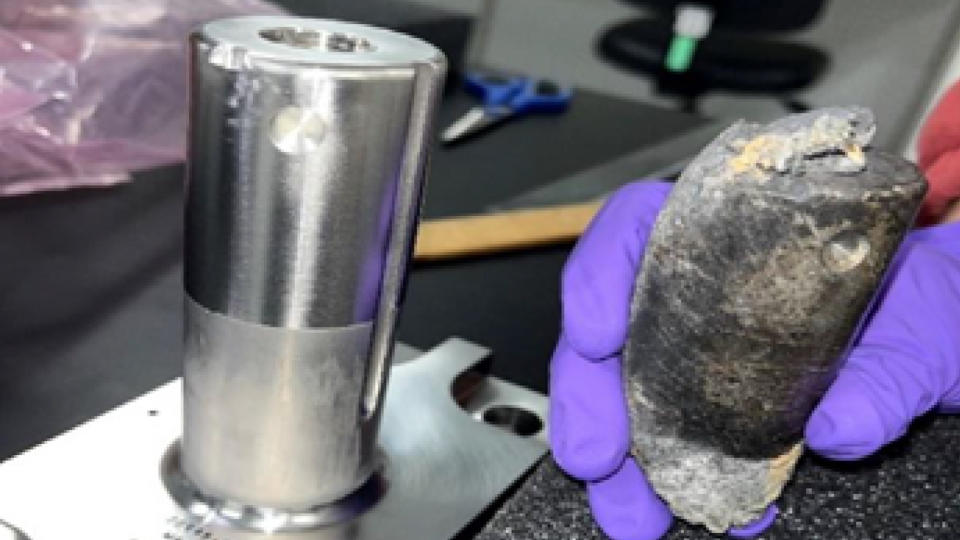The mysterious object that crashed through the roof of a Florida home last month did indeed come from the International Space Station (ISS), NASA has confirmed.
That home, in the seaside city of Naples, belongs to Alejandro Otero. Shortly after the March 8 incident, Otero said he thought the offending object was part of a cargo pallet packed with 5,800 pounds (2,630 kilograms) of aging batteries jettisoned from the ISS in March 2021.
And he was right, according to a new NASA analysis of the object, which was performed at Florida’s Kennedy Space Center.
“Based on the examination, the agency determined the debris to be a stanchion from the NASA flight support equipment used to mount the batteries on the cargo pallet,” agency officials wrote in an update today (April 15).
The cylindrical piece of space junk is made of a metallic alloy called Inconel, they added. It weighs 1.6 pounds (0.7 kg) and measures 4 inches (10 centimeters) high by 1.6 inches (4 cm) wide.
Related: 5,800 pounds of batteries tossed off the ISS in 2021 will fall to Earth


The nickel-hydride batteries were dumped after new lithium-ion versions were delivered to the ISS for a power-supply upgrade. The pallet and the batteries were expected to burn up completely in Earth’s atmosphere, NASA officials said in today’s update — yet that didn’t happen, and the agency wants to learn why.
“The International Space Station will perform a detailed investigation of the jettison and reentry analysis to determine the cause of the debris survival and to update modeling and analysis, as needed,” NASA officials wrote in today’s update.
“NASA specialists use engineering models to estimate how objects heat up and break apart during atmospheric reentry,” they added. “These models require detailed input parameters and are regularly updated when debris is found to have survived atmospheric reentry to the ground.”
RELATED STORIES:
— Mysterious object that crashed through Florida home was likely space junk from the International Space Station
— Chinese space junk falls to Earth over Southern California, creating spectacular fireball (photos, video)
— Kessler Syndrome and the space debris problem
Otero’s experience serves as a reminder that there’s a tremendous amount of hardware whizzing over our heads.
According to the European Space Agency, Earth orbit hosts about 36,500 pieces of space junk at least 4 inches (10 cm) wide, and a whopping 130 million objects at least 1 millimeter in diameter. Even these tiny shards pose a danger to satellites and other orbiting assets, given the tremendous speeds at which they travel. For example, at 250 miles (400 kilometers) up — the average altitude of the ISS — orbital velocity is about 17,000 mph (27,400 kph).
And, as has been demonstrated, some of this junk comes crashing back to Earth from time to time. For instance, the 23-ton core stages of China’s powerful Long March 5B rocket routinely fall in an uncontrolled fashion a week or so after their launches, to the consternation of the international space community.
NASA’s new analysis may have financial consequences for the agency and for Otero, by the way.
“I eagerly await communication from the responsible agencies, as their assistance is crucial in resolving the damages from this deliberate release. But more importantly how in the future to arrange the payload so it will burn in its entirety as it reenters,” Otero wrote via X on March 8, shortly after his home was hit.
